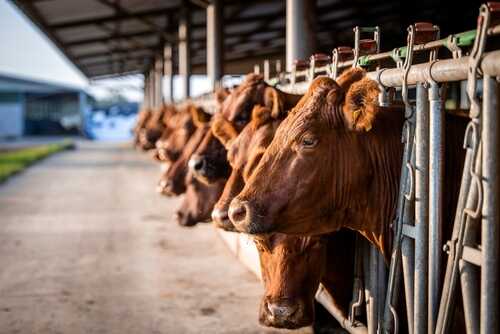
(PresidentialHill.com)- Industries all across America are struggling nowadays, and some are even at the lowest points they’ve been at in decades.
The beef cattle industry is one of those industries. Recently the U.S. Department of Agriculture released data that shows inventory of beef cattle in America has reached the lowest mark it’s been at since back in 1962.
The biannual cattle report revealed that as of January 1 of this year, there’s a head inventory of 89.3 million, which represents a 3% drop year-over-year. It’s also the lowest market since 2015.
Of that total number, 38.3 million heifers and cows have calved. In addition, there’s 28.9 million cows for beef as of the start of 2023. These cows are bred specifically so they can be slaughtered and then sold for meat.
This number represents almost a 4% decrease from the same point in 2022. It’s also the lowest number the USDA has reported since back in 1962.
Two of the main contributing factors for the drop in head count are the drought that raged through the U.S. last year and input prices on things the industry needs.
Ryan McGeeney, who works for Beef Magazine, wrote on the topic recently:
“For many producers throughout the country, 2022 had offered a perfect storm of economic and weather-related challenges: input costs such as diesel and fertilizer doubling or even tripling, and a hot, dry summer that only increased reliance on groundwater in the absence of rainfall.
“For cattle producers in particular, drought conditions offered no replenishment of dwindling forage supplies, leaving many producers to cull deeper into their herds than they might have otherwise preferred. Elevated beef cull prices contributed to an 11% increase in beef cow slaughter, according to the USDA.”
The decline isn’t a surprise to many other people who work in the industry as well.
In a recent newsletter sent out to members of the industry, Kenny Burdine of the University of Kentucky and James Mitchell of the University of Arkansas System Division of Agriculture, wrote:
“There was no question that the beef cow herd had gotten smaller. [It was] just a question of how much smaller.”
The one positive over the last year is that those producers who were able to sell stock because they had it were able to make a nice profit. That’s because even though beef cattle supply was down, demand from American consumers remained steady last year.
Mitchell, though, added that there are some concerns going forward for the industry, too. He wrote:
“There is a pretty substantial biological lag in the beef supply chain. What consumers experience at the grocery store is a product of what cattle producers were going through a year or two ago. It takes about two years for a new calf to become the steak on your dinner plate.”
This means that tighter cattle production is sure to follow in the next few years, which could mean even higher prices for beef at the store.














